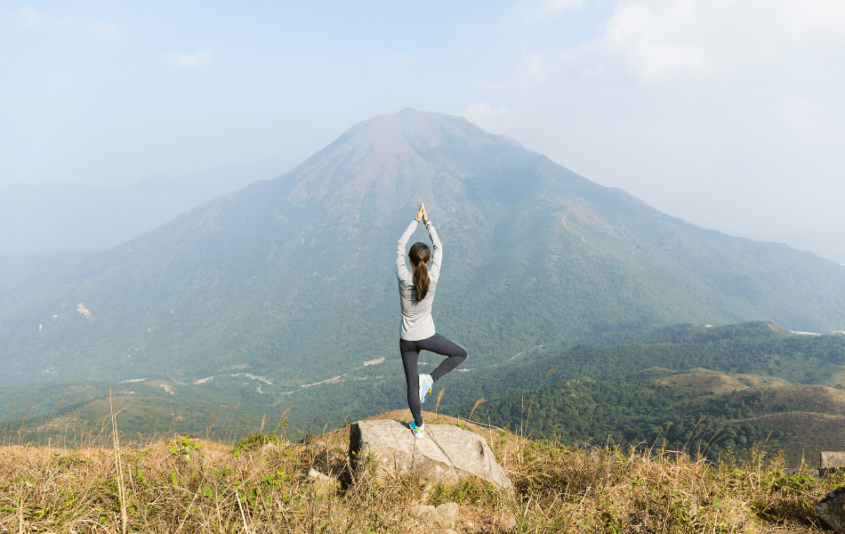Hiking and yoga are two complementary activities that can help you boost your mood, lower stress levels, and improve physical fitness and stamina.
Both activities are effective when practice separately, but when you combine them together the benefits amplify.
Here are 5 mental, emotional, and physical health benefits you need to know about…
The healing power of yoga & hiking outdoors according to research
Research shows that engaging in nature-focused activities like hiking, forest bathing, and practicing yoga outdoors has real, tangible, physical effects like reducing cortisol (stress hormone) levels and increasing the activity of the immune system’s natural killer cells. (1)
Combining yoga and hiking outdoors also helps you get abundant doses of Vitamin D, which can further boost immunity, lower inflammation, and decrease the risk of certain diseases such as cancer, heart disease, hypertension, diabetes, and obesity.
Healthy Vitamin D levels are also linked to lowered anxiety and depression.
Yoga can help prevent hiking-related injuries
Pre-hike yoga asanas (poses) can help you build a solid foundation.
Taking the time to stretch before a hike will help to warm up your muscles so you can tackle whatever trail is before you.
Yoga helps you build strength and stamina too, so you can go for longer stretches without increasing your risk of injury.
You’ll also cultivate more body awareness through yoga, and this is always helpful on a hike because a lack of body awareness often means a potential slip or fall.
Yoga will also help you improve your balance, which is a good thing if you’re a hiker!
A post-hike yin yoga session can help to improve recovery
Have you ever felt sore or stiff after a hike?
Yin yoga can help to relieve those aches and pains by relaxing the muscles while strengthening your connective tissue, tendons, and ligaments.
Yin yoga is a slow-paced style of yoga that involves holding poses for a period of time whilst practicing stillness and mindfulness.
Just 15 minutes of yin after a hike can help your body recover more quickly and efficiently.
Try this 15-minute practice the next time you finish on the trail:
- Caterpillar pose (hold time: 3 minutes)
- Butterfly pose (hold time: 3 minutes)
- Ankle stretch (hold time: 1 minute)
- Bananasana (hold time: 2 minutes each side)
- Dangling (hold time: 2 minutes)
- Dragons (hold time: 1 minute each side)
Pranayama (yoga breathing) can help strengthen your lungs and respiratory system
Ancient yogis believed that the way we breathe can have powerful effects on our mental, emotional, and physical well-being.
In fact, they dedicated an entire limb or pillar of yoga to breath control.
Pranayama (yoga breathing) done outdoors helps you commune with nature in ways that being indoors does not.
The overall objective of yoga is to experience connection and union first within yourself and your body and then with the outside world.
You’re taking in the earth atmosphere with every inhale and just like that you engage in a synergistic give-and-take with Mother Earth.
Practicing pranayama regularly can also help to boost immunity, lower inflammation, lose weight, increase focus, improve sleep, and dissolve anxiety.
Turn your hike into a mindfulness meditation for increased well-being
True yoga practice asks us to approach each moment with curiosity and mindfulness.
Being in nature makes this easier.
When you commune with nature, breathe her air, and take in her sights your frequency begins to match her frequency.
The yogic principles of Self-Study (Svadhyaya) and One-pointed focus (Dharana) can help you cultivate mindfulness with every step you take on a hike.
REFERENCES
:
- https://www.ncbi.nlm.nih.gov/pmc/articles/PMC2793341/












